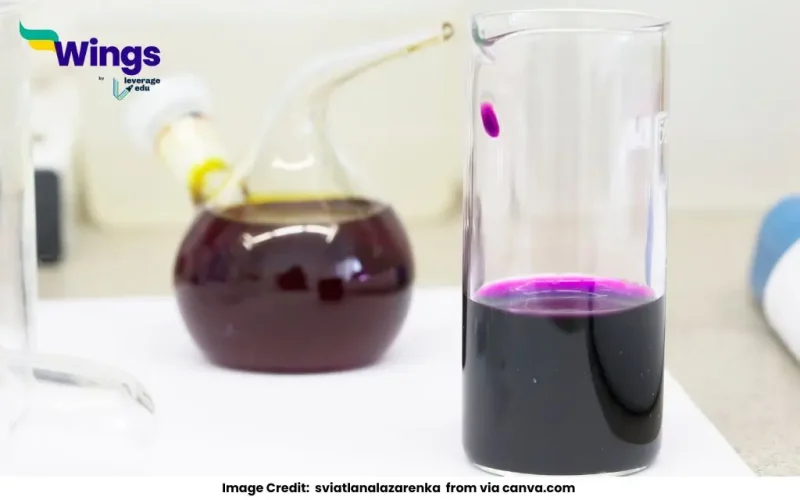The molar mass of potassium permanganate (KMnO₄) is 158.04 g/mol. This value is calculated by summing the atomic masses of its constituent elements: potassium (K), manganese (Mn), and oxygen (O).
Complete Answer:
Calculation of the Molar Mass of Potassium Permanganate
To calculate the molar mass of KMnO₄, follow these steps:
1. Identify the Atomic Mass of Each Element:
Potassium (K): Atomic mass = 39.10 g/mol
Manganese (Mn): Atomic mass = 54.94 g/mol
Oxygen (O): Atomic mass = 16.00 g/mol
2. Count the Number of Atoms in the Formula:
Potassium: 1 atom
Manganese: 1 atom
Oxygen: 4 atoms
3. Sum the Total Molar Mass:
Molar Mass = (1×39.10)+(1×54.94)+(4×16.00) = 39.10+54.94+64.00 = 158.04 g/mol
Thus, the molar mass of potassium permanganate is 158.04 g/mol.
What is Potassium Permanganate (KMnO4)?
Potassium permanganate is a dark purple crystalline compound widely used as:
- An Oxidizing Agent: Commonly employed in chemical reactions and laboratory experiments.
- A Disinfectant: Used for treating water and cleaning wounds due to its antiseptic properties.
- In Industry: Essential in the production of certain chemicals and dyes.
Why is Molar Mass Important?
Molar mass connects the mass of a substance to the number of moles, enabling:
- Stoichiometric Calculations: Determining reactant and product quantities in reactions.
- Solution Preparation: Creating solutions with precise concentrations in laboratories.
Let’s take a practical example to understand the molar mass of KMnO4 a little better. Consider a scenario where you need 1 mole of potassium permanganate for a reaction.
- Weigh out 158.04 grams of KMnO₄ to have 1 mole of the compound.
- This mole contains 6.022 × 10²³ formula units (Avogadro’s number) of KMnO₄.
Common Doubts in Chemistry
 60,000+ students trusted us with their dreams. Take the first step today!
60,000+ students trusted us with their dreams. Take the first step today!


 One app for all your study abroad needs
One app for all your study abroad needs










